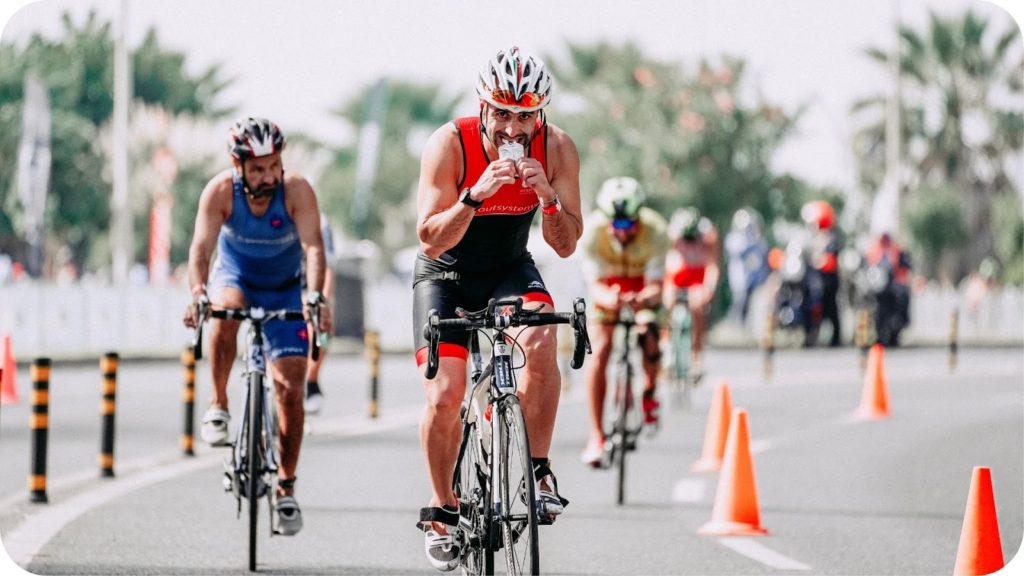The Definite Guide to Lose Weight Through Cycling Without Sacrificing Strength
In the ever-evolving world of cycling, body weight and composition play a crucial role in a cyclist’s performance and overall health. The desire to achieve the perfect power-to-weight ratio often leads cyclists to contemplate weight loss, but it’s essential to approach this goal with a well-informed strategy. This blog post will guide you through the process of losing weight through cycling without compromising your strength and overall well-being.
Define Your Goal

Before embarking on any weight loss journey, it’s crucial to determine your motive. Are you aiming to lose weight for health, performance, or aesthetics? Understanding your “why” will help you set realistic and relevant goals. For recreational and amateur cyclists seeking physical and mental well-being, a broad range of body weight and composition is considered healthy. Your overall health and performance should take precedence over arbitrary weight targets.
On the other hand, competitive cyclists, especially those riding on hilly terrain, may strive for optimal weight to improve their power-to-weight ratio. However, it’s important to strike a balance between weight loss and preserving strength and power. Losing weight requires an energy deficit, achieved through a combination of calorie reduction and increased training. But excessive calorie restriction can hinder training performance and recovery. The key is finding the right balance for your body and goals.
Set the Finish Line

Once you’ve identified your broader goal, it’s essential to determine how you’ll measure your progress. Weight loss shouldn’t be the sole focus; instead, monitor improvements in overall health, energy levels, and performance. Consider performance metrics such as speed, power, and perceived exertion on rides. If your weight loss efforts negatively impact your performance, it might be time to reevaluate your approach.
Cost Versus Benefit

Weight loss requires effort, and it’s vital to assess whether the benefits outweigh the costs. Instead of solely fixating on weight, consider improving the overall quality of your diet, fueling strategy, sleep, and training program. These improvements can have a greater impact on your performance than shedding a few kilograms. Moreover, small dietary and training tweaks aimed at overall health and performance can lead to unintentional weight loss, making the process more sustainable.
Watch Out for Warning Signs

While losing weight can be beneficial, it’s essential to recognize warning signs of excessive weight loss. Consistently consuming fewer calories than your body needs can lead to negative consequences on your training, performance, and overall health. Signs of under-fueling may include feeling sluggish, struggling to recover, and increased susceptibility to illness. Flexibility in dietary habits and attentive listening to your body’s cues are vital to maintaining a healthy balance and optimal weight.
Recommended Weight and Body Fat Percentage Ranges for Cyclists

Calculating your optimal weight and body fat percentage can be complex, as it depends on various factors, including genetics, training, and overall goals. Broad guidelines can provide a rough idea, such as the “healthy range” of BMI (body mass index) falling between 18.5-25. Well-trained cyclists often have a BMI between 20-22, but individual variations abound.
Similarly, body fat percentage recommendations range from about 6-22% for men and 16-32% for women. However, these ranges may not accurately reflect what’s optimal for a particular individual. Instead of comparing yourself to general guidelines, focus on your personal progress, strength gains, and overall well-being.
Top Tips from a Cycling Nutritionist

Nutritionist Dr. Desire Coelho recommends these golden rules for cyclists:
Sleep well: Adequate sleep is essential for health and performance and can influence your appetite and food choices.
Eat plenty of protein: Ensure sufficient intake of high-quality, lean protein to build and maintain muscle mass while losing weight.
Plan ahead: Create a strategy to stay on track with your nutrition plan even during busy times.
Tracking Nutrition

Many cyclists use tracking apps and wearable devices to monitor energy intake and expenditure. While tracking can be useful for progress monitoring, the actual numbers should be taken with caution. Energy expenditure is challenging to measure accurately, and apps often provide rough estimates. Instead of fixating on these numbers, focus on performance stats and listen to your body’s cues.
Conclusion
Weight and body composition are essential factors in a cyclist’s performance and overall well-being. Finding the right balance between weight loss, strength, and performance is a personalized journey. Define your goals, set realistic expectations, and prioritize overall health and performance over arbitrary numbers. Remember that success on the bike is about much more than just the digits on a scale; it’s about achieving a harmonious balance between your body, training, and life. Keep the bigger picture in mind, and let your cycling journey be a rewarding and enjoyable experience.
